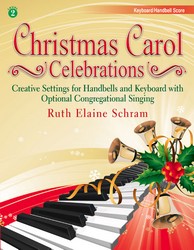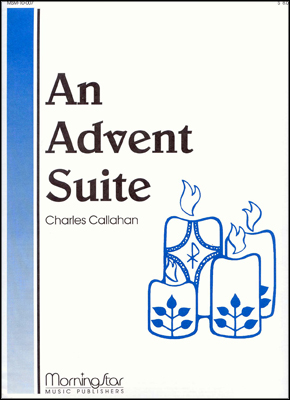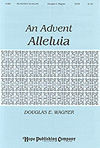- |
User Links
56
Come, Thou Long-Expected Jesus
Hymn Information
- First Line
- Come, thou long-expected Jesus
- Author
- Charles Wesley (1744)
- Tune Name
- STUTTGART
- Adapter
- Henry J. Gauntlett (1861)
- Composer (descant)
- John W. Wilson
- Tune Source
- Christian F. Witt's <cite>Psalmodia Sacra</cite>, 1715
- Topic
- Church Year: Advent · Hope
Copyright Information
- Text Copyright
- Public Domain
- Tune Copyright
- Desc. © 1983 Hope Publishing Company
- Reprint/Projection Information
- Words: The Words are in the Public Domain; you do not need permission to project or reprint the Words.
- Music: Permitted with a license from CCLI.com or from OneLicense.net. If you do not own one of these licenses, please contact the copyright holder for permission.
Full Text
Scripture References
Thematically related:
- st. 1 = ·
- st. 3 = · ·
- st. 4 = · ·
Further Reflections on Scripture References
The double nature of Advent is reflected in this text, in which we remember Christ's first coming even while praying for his return. Stanzas 1 and 2 recall Advent prophecies in the Old Testament; stanza 3 speaks of Christ's birth and kingdom, and stanza 4 is a prayer for Christ's rule in our hearts.
Confessions and Statements of Faith References
Further Reflections on Confessions and Statements of Faith References
The phrase “long-expected” and “the Savior promised long” are descriptors of Jesus and are familiar terms to many Christians. These words speak of generations who waited while centuries passed. Our World Belongs to God, paragraph 23 also uses such terminology in calling him the “long-awaited Messiah.” And Belgic Confession, Article 18 professes that this all happened only “at the time appointed.”
56
Come, Thou Long-Expected Jesus
Call to Worship
The Lord be with you.
And also with you.
As we enter this season of Advent,
may the love of God the Father, and the grace of Jesus the Son,
and the fellowship of the Holy Spirit be and abide with us all.
Amen!
[Reformed Worship 57:4]
—
Worship Sourcebook Edition Two
Confession
O Holy Child of Bethlehem,
descend to us, we pray.
Cast out our sin and enter in;
be born in us today.
[“O Little Town of Bethlehem” Phillips Brooks (1835-1893), PD ]
[“O Little Town of Bethlehem” Phillips Brooks (1835-1893), PD ]
—
Worship Sourcebook Edition Two
Assurance
Faithful God, we wait for you to come.
We know that you will
because you already have
and because you promised to return.
While we wait, send your Spirit
so that we may grow in grace.
Prepare us for your coming, Lord. Amen.
[The Worship Sourcebook]
—
Worship Sourcebook Edition Two
Jesus, the long-expected Savior, was born to set us free.
He releases us from our fears and sins
and helps us find our rest in him.
Jesus delivers us from the way of sin and death.
Yet he remains the desire of people in every nation,
and he will direct us into the ways of his kingdom.
And so, with hopeful hearts, we call to him:
Come now, long-expected Jesus,
come again to rule in our hearts. Amen.
—inspired by Charles Wesley (1744)
[The Worship Sourcebook]
[The Worship Sourcebook]
—
Worship Sourcebook Edition Two
Our only hope is Jesus Christ.
After we refused to live in the image of God,
he was born of the virgin Mary,
sharing our genes and our instincts,
entering our culture, speaking our language,
fulfilling the law of God.
Being united to Christ’s humanity,
we know ourselves when we rest in him.
Come, Lord Jesus:
We are open to your Spirit.
We await your full presence.
Our world finds rest in you alone.
—Our Song of Hope, st. 3, closing prayer
—
Worship Sourcebook Edition Two
Blessing/Benediction
In gratitude to God, empowered by the Spirit,
let us strive to serve Christ in our daily tasks
and to live holy and joyful lives,
even as we watch for God’s new heaven and new earth,
praying: Come, Lord Jesus!
—from A Brief Statement of Faith
—
Worship Sourcebook Edition Two
Additional Prayers
The Lord is glorious and exalted.
Lord, shine in our hearts and lives.
God’s people are often in distress and sorrow.
Lord, show your might and deliver us from evil.
We sometimes do not feel the Lord’s presence.
O Lord, let your face again shine on us.
The Lord was the shepherd of his people Israel.
Lord, lead us in our way and guide us in our walk.
In this Advent season we stand on tiptoe—
Immanuel, invade our lives. Amen.
—based on Psalm 80:1-7
[Reformed Worship 9:23]
—
Worship Sourcebook Edition Two
Covenant God,
you heard your people yearning for a Savior.
Thank you for sending your Son so long ago.
We now rehearse your promise
that Christ will come again,
that death and suffering will end
and every tear will be wiped away.
Come, Lord Jesus, come.
As you fulfilled Israel’s hopes long ago,
so we long for all these promises to be fulfilled. Amen.
[The Worship Sourcebook]
—
Worship Sourcebook Edition Two
56
Come, Thou Long-Expected Jesus
Tune Information
- Name
- STUTTGART
- Key
- F Major
- Meter
- 8.7.8.7
Recordings
Musical Suggestion
The text will be familiar to most adults and is a good one to teach our children from memory. Stanzas 1 and 3 would be especially appropriate for family memorization.
Another good solution would be to invite someone in the congregation who plays a bass instrument (cello, bassoon, trombone, etc.) to join the organ for this prelude. The bass instrument would play the melody line, accompanied by the organist playing only on manuals.
(from Reformed Worship, Issue 17)
—
Davis Folkerts
This quintessential Advent text expresses both the historic context of Jesus as the fulfillment of Messianic prophesies (“Israel’s strength and consolation”) and the present context of Jesus as the Savior who is born in our hearts (“from our fears and sins release us, let us find our rest in thee”). Here the text is set to the regal STUTTGART. This and the alternate tune, HYFRYDOL bring out the triumphant overtones of the text. For a more yearning, “now not yet” take on this text, sing it to the tune BEACHSPRING.
—
Greg Scheer
56
Come, Thou Long-Expected Jesus
Hymn Story/Background
Charles Wesley wrote this Advent hymn and printed it in his Hymns for the Nativity of our Lord (1744). Like so many of Wesley's texts, "Come, Thou Long-Expected Jesus" alludes to one or more Scripture passages in virtually every phrase. The double nature of Advent is reflected in this text, in which we remember Christ's first coming even while praying for his return. Stanzas 1 and 2 recall Advent prophecies in the Old Testament; stanza 3 speaks of Christ's birth and kingdom, and stanza 4 is a prayer for Christ's rule in our hearts.
STUTTGART was included in Psalmodia Sacra (1715), one of the most significant hymnals of the early eighteenth century. The tune title STUTTGART relates to a story about Rev. C. A. Dann's banishment from his pulpit at St. Leonard's Church in Stuttgart in the early nineteenth century. When Dann was eventually invited back to his church, his congregation greeted him with the singing of "Sollt' es gleich." Henry J. Gauntlett put the tune into its present isorhythmic (all equal rhythms) form for Hymns Ancient and Modern (1861).
—
Bert Polman
Author Information
Several members of the Wesley family are significant figures in the history of English hymnody, and none more so than Charles Wesley. Charles was the eighteenth child of Samuel and Susanna Wesley, who educated him when he was young. After attending Westminster School, he studied at Christ Church College, Oxford. It was there that he and George Whitefield formed the Oxford "Holy Club," which Wesley's brother John soon joined. Their purpose was to study the Bible in a disciplined manner, to improve Christian worship and the celebration of the Lord's Supper, and to help the needy. Because of their methods for observing the Christian life, they earned the name “Methodists.”
Charles Wesley was ordained a minister in the Church of England in 1735 but found spiritual conditions in the church deplorable. Charles and John served briefly as missionaries to the British colony in Georgia. Enroute they came upon a group of Moravian missionaries, whose spirituality impressed the Wesleys. They returned to England, and, strongly influenced by the ministry of the Moravians, both Charles and John had conversion experiences in 1738 (see more on this below). The brothers began preaching at revival meetings, often outdoors. These meetings were pivotal in the mid-eighteenth-century "Great Awakening" in England.
Though neither Charles nor John Wesley ever left the Church of England themselves, they are the founders of Methodism. Charles wrote some sixty-five hundred hymns, which were published in sixty-four volumes during his lifetime; these include Collection of Psalms and Hymns (1741), Hymns on the Lord's Supper (1745), Hymns and Spiritual Songs (1753), and Collection of Hymns for the Use of the People called Methodists (1780). Charles's hymns are famous for their frequent quotations and allusions from the Bible, for their creedal orthodoxy and their subjective expression of Christian living, and for their use of some forty-five different meters, which inspired new hymn tunes in England. Numerous hymn texts by Wesley are standard entries in most modern hymnals; fifteen are included in Lift Up Your Hearts.
Charles's elder brother John also studied at Christ Church College, Oxford, and was ordained a priest in the Church of England in 1728. A tutor at Lincoln College in Oxford from 1729 to 1735, Wesley became the leader of the Oxford "Holy Club" mentioned above. After his contact with the Moravian missionaries, Wesley began translating Moravian hymns from German and published his first hymnal, Collection of Psalms and Hymns, in Charleston, South Carolina (1737); this hymnal was the first English hymnal ever published for use in worship. Upon his return to England in 1738 Wesley "felt his heart strangely warmed" at a meeting on Aldersgate Street, London, when Peter Bohler, a Moravian, read from Martin Luther's preface to his commentary on the epistle to the Romans. It was at that meeting that John received the assurance that Christ had truly taken away his sins. That conversion experience (followed a few days later by a similar experience by his brother Charles) led to his becoming the great itinerant evangelist and administrator of the Methodist "societies," which would eventually become the Methodist Church. An Anglican all his life, John Wesley wished to reform the Church of England and regretted the need to found a new denomination. Most of the hymnals he prepared with his brother Charles were intended for Christians in all denominations; their Collection of Hymns for the Use of the People called Methodists (1780) is one of the few specifically so designated. John was not only a great preacher and organizer, he was also a prolific author, editor, and translator. He translated many classic texts, wrote grammars and dictionaries, and edited the works of John Bunyan and Richard Baxter. In hymnody he is best known for his translation of selections from the German hymnals of Johann Cruger ('Jesus, thy boundless love to me"), Freylinghausen, and von Zinzendorf ('Jesus, thy blood and righteousness"), and for his famous "Directions for Singing," which are still printed in Methodist hymnals. Most significant, however, is his well-known strong hand in editing and often strengthening his brother Charles's hymn texts before they copublished them in their numerous hymnals.
—
Bert Polman
Composer Information
Christian F. Witt (b. Altenburg, Germany, d. 1660; d. Altenburg, 1716) was an editor and compiler of Psalmodia Sacra (1715); about 100 (of the 774) tunes in that collection are considered to be composed by him, including STUTTGART, which was set to the text "Sollt' es gleich." Witt was chamber organist and later Kapellmeister at the Gotha court. He composed vocal and instrumental music, including some sixty-five cantatas.
—
Bert Polman
Henry J. Gauntlett (b. Wellington, Shropshire, July 9, 1805; d. London, England, February 21, 1876) was a gifted organist, lawyer, and author. At age 9, he took up the post of church organist at his father’s church in Olney, Buckinghamshire. He was offered the position of assistant to the organist at St. Paul’s Cathedral in London, but his father discouraged him from the life of a performer, and Gauntlett went into law instead. In 1827 he renewed his love of the organ and became a church organist in Southwark. He then began a career in organ design reform, and was soon much in demand as a performer. He was chosen by Mendelssohn to play the organ part in Elijah. Gauntlett was a prolific hymn writer and hymn book editor.
—
Laura de Jong
John Whitridge Wilson (b. Bournville, Birmingham, England, January 21, 1905; d. 1992) was a graduate of Sussex College, Cambridge. He served as Director of Music at Charterhouse School from 1947 to 1965. He was then on the teaching staff of the Royal College of Music from 1965 to 1980. He claimed to be both an Anglican and a Methodist, and served as the treasurer of The Hymn Society of Great Britain and Ireland for some 40 years. He was the most influential church musician in England during the last half of the twentieth century, and a close friend and collaborator of hymn text writer, Fred Pratt Green. John contributed a chapter "Looking at Hymn-Tunes: The Objective Factors" to the Erik Routley festschrift Duty & Delight (1985).
—
Hope Publishing (http://www.hopepublishing.com)
Song Notes
In one of his many “Coop’s Columns” on the Calvin Institute of Christian Worship website, former Calvin College (Grand Rapids, MI) chaplain Dale Cooper recalls a moment in which he was travelling home to his young family after spending the summer in Geneva. He was calling his wife from Chicago’s O’Hare airport to arrange his pick-up in Grand Rapids, when his then four-year-old son asked for the phone. Cooper writes, “His only words to me— a sigh, really: “’Daddy, when am I going to be where you are?’” (Cooper, “Coop’s Column – Spirit at Work: Guarantor”).
It is this sigh of longing that we express when we sing the words of Charles Wesley’s beautiful Advent hymn, “Come, Thou Long Expected Jesus.” For though we know that Christ goes with us and before us every day, we long for the day when we are with him in all of the fullness and glory he will bring. We long for the day when we are with Christ in a new heaven and new earth, when all things are made new. And just as a four-year-old crawls into his father’s arms after an extended absence, so too we long for the day when we would be at rest in Christ, enfolded in the embrace of our Savior.
—
Laura de Jong
Suggestions or corrections? Contact us


 My Starred Hymns
My Starred Hymns





